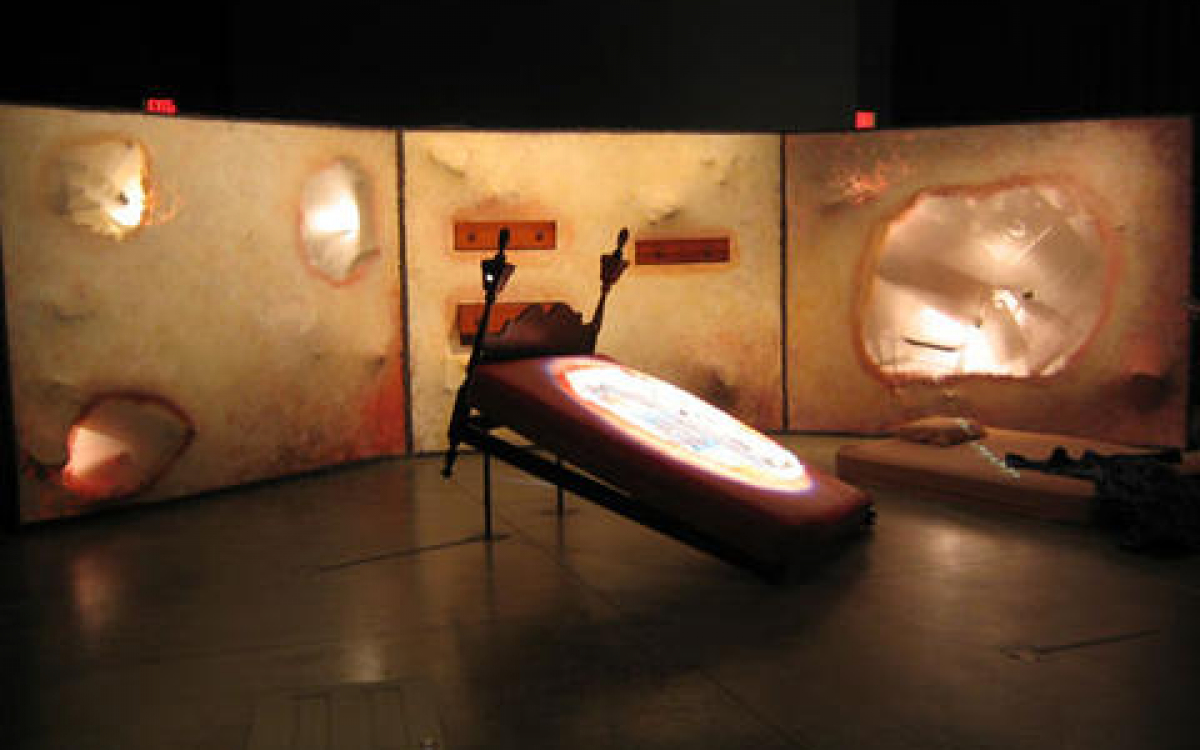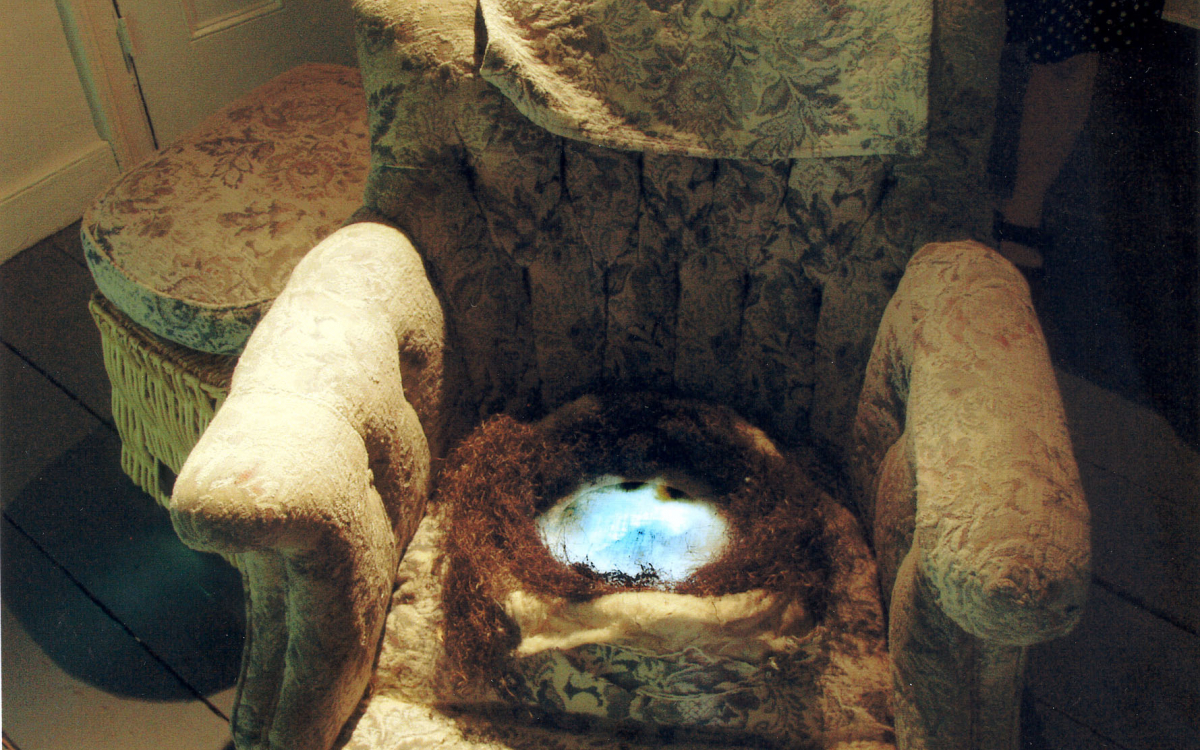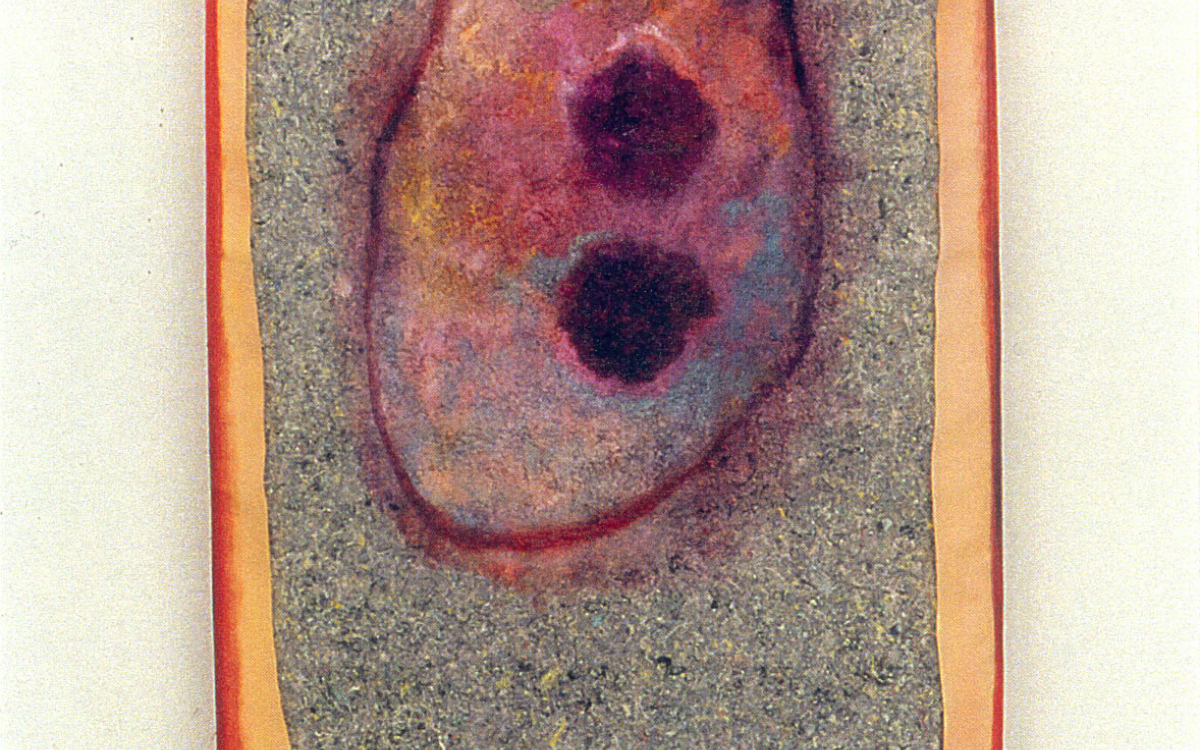A.M. Hoch - Mitosis: Formation of Daughter Cells
Using digital technology, sculpture and painting, New York artist A.M. Hoch creates a habitable cinema, linking images, sound and space to create an intimate sense of place. Mitosis: Formation of Daughter Cells uses the coded, cellular memory of a family to explore the hidden mechanisms, both biological and social, that shape us. Mitosis (the process by which the chromosomes in the cell's nucleus divide and replicate) provides a vivid metaphor for the elemental struggle for individuation within the nuclear family.* Working with Wallace Shawn, one of America's most original playwrights and performers; Deborah Eisenberg, actor, writer and winner of four O'Henry awards; and Peabody Award-winning digital media architects dotsperinch, A.M. Hoch creates a new theatre of memory—a multimedia environment where biology, personal history and genetics converge. Reproduction, including downloading of A.M. Hoch's works, is prohibited without the express written permission of the artist.
*For more information, download the Mitosis Press Release.
A Conversation on the Creation of Mitosis by A.M. Hoch and Mark Shepard (dotsperinch)
A.M.: "Though I wrote the script and outline for the basic structure of this installation a number of years ago, I knew that many of the details of its construction and technology could not be determined until a specific site was found. When, to my great joy, I learned that the Beall Center was interested in exhibiting the piece, I realized suddenly all kinds of questions and specifics had to be addressed. It became essential for me to find technology experts with whom I could easily communicate and who were willing to create a technology that supported the emotional core of the piece, rather than just wanting to use technology for technology's sake.
As I consider myself first and foremost a painter, I wanted to be sure that the visceral, mysterious power of paint and the other physical materials used in this installation would in no way become secondary to the audio and video elements. It was crucial to me that this piece begins and ends as a painting: albeit, a talking painting.
When I first approached Mark Shepard of dotsperinch to collaborate with me on the digital aspects of Mitosis, I was immediately struck by the intuitive way he responded to the concept. Here was an architect and technologist who seemed to think and feel like a painter, no translation was necessary. Our mutual desire to explore and develop a new kind of relationship between film, architecture, and painting, in which the viewer plays an active rather than passive role was thrilling to discover. Ultimately, the life and heart with which dotsperinch imbued the technical components of Mitosis is as fascinating and compelling to me as I hope it is for the viewer.
The idea of using motion sensors to trigger three different versions of the same family conversation grew out of the central notion of the piece: a meditation on the multitude of perspectives, often conflicting, of a single family's history. The viewer's unwitting interaction with the family's dynamic-the viewer's possible doubts and questions about what they are hearing-concretizes the ultimate mystery of human memory. Though I wasn't aware of it until the piece was finished, the other audio elements I had chosen to interweave with the family's dialogue-the whispering undercurrent of the Rumi text and the female narration of the mitotic process-concretize the ever-presence of spiritual truth and the immutable laws of nature in the midst of human discord, doubt, and deceit.
My decision to keep the video components of the installation hidden and "marginal" (e.g., running along the outer baseboard of the scenerio) was initially a visual one, in order to avoid a visual cacophony with the painterly and sculptural aspects. But later I realized that the video components function as portals into the unconscious-that is, much-needed escape hatches-from the dissonance of this family's struggle."
M.S.: "When Amy first came to me speaking of drawers talking, and expressing the conflict a family relates to its memory, I was immediately intrigued. I thought that her vision of creating a world that explored the mind, body and spirit of a family, which was to be manifested in sculpture, video, digital technologies, and audio was a wonderful challenge to create. Collaborating with an artist like Amy involves getting the various elements of the work to flow together: to build into the work an infrastructure that enables the piece to live. As we continued to work together, I found my role to be that of creating a habitable cinema of sorts - to support the experience of this "family" through simple and complex uses of technology. In this work the technology is threaded across multiple physical and virtual domains: midi sequencing software controlling embedded microchips that open and close the drawers embedded within the wall, proximity sensors providing real-time feedback from the physical space modulating the tone and character of the speaking voices. The challenge was to create a hidden electronic infrastructure that rendered the narrative arc of the work through a seamless experience of its disparate parts. For me, this piece is successful because it renders a complex story in very palpable terms, through the careful and considered integration of elements of painting, sculpture and digital technologies."














